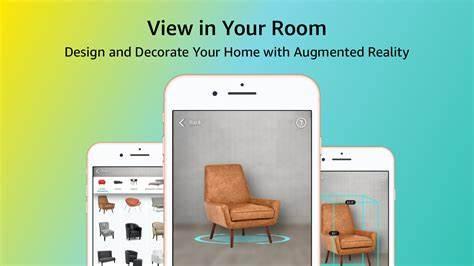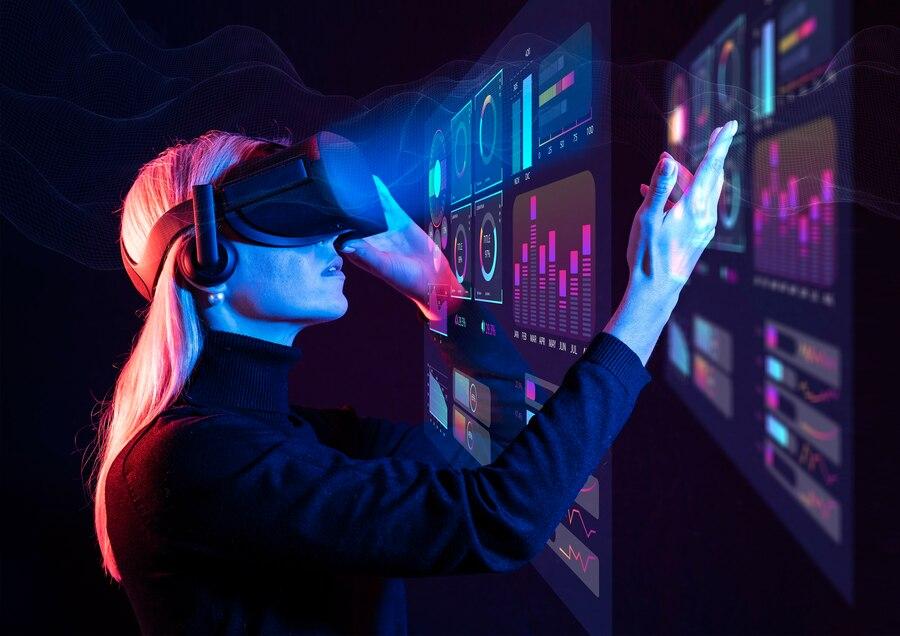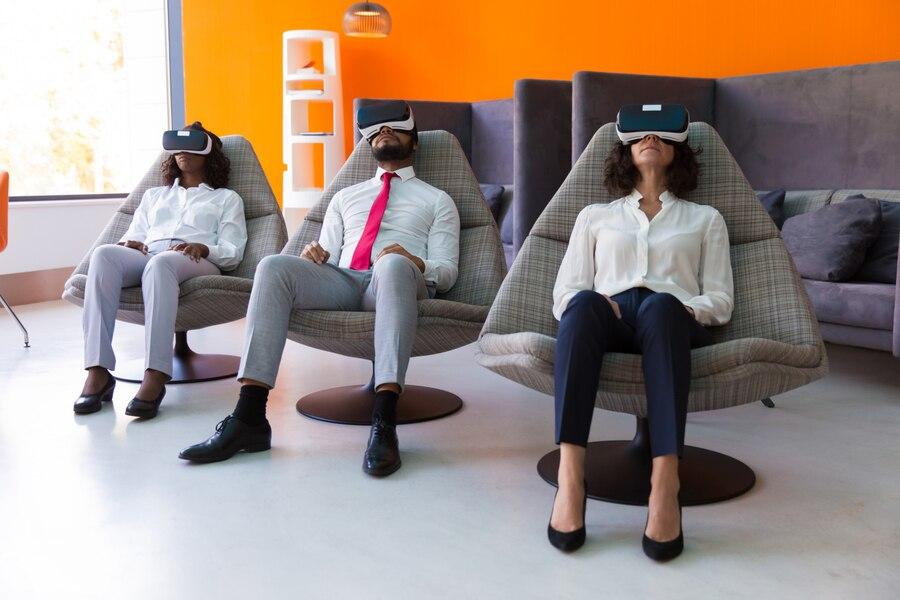



Table of Contents
- Introduction
- What Is Augmented Reality (AR)?
- How is Augmented Reality (AR) helping interior designing companies?
- What is Virtual Reality?
- How can Virtual Reality elevate your home decor game?
- Leading the Charge: Companies Embracing AR and VR
- Benefits for Customers
- Conclusion
- Faq's
Introduction
Picture this! You are sitting in your new home, a clean slate, waiting for you to unleash your creativity. You open your Pinterest account, visualizing how your favorite mood board would transform your space. Yet, there's that lingering thought: Will the final design truly match my vision?
What if I told you it's now possible to see exactly how your room will look even before the first brushstroke?
The interior design industry has harnessed the power of Augmented Reality (AR) and Virtual Reality (VR), giving homeowners a revolutionary way to visualize and refine their dream spaces. Today, you no longer have to imagine whether that sofa complements the wall color or whether the tiles match the overall theme. With AR and VR, you can step into your future home and experience it firsthand.
In this article, we'll take a deep dive into the transformative role of AR and VR in 2025, exploring their features, capabilities, and the groundbreaking impact they've had on the world of interior design.
What Is Augmented Reality (AR)?
When buying a product, especially a piece of furniture on amazon.in, you must have come across this option where you can select furniture and see how it looks in the place of your choice. Something like the below picture?

With augmented reality, the customer can visualize a concept in real time, allowing them to be more confident in their decision. AR enhances our reality by overlaying digital elements onto the physical world, AR has been around for a while, but recent advancements in technology have made it more accessible and affordable, and it is being used in a wide range of applications.
How is Augmented Reality (AR) helping interior designing companies?
AR technology is being increasingly adopted by companies to provide customers with an immersive experience. Traditionally, designers have relied on sketches, drawings, and physical models to bring their creative visions to life. However, the advent of Augmented Reality is, empowering designers to craft virtual renditions of their designs. This technological leap allows clients to engage with and experience designs in a more immersive and authentic manner.
AR proves to be a game-changer by enabling the creation of 3D models for rooms or entire structures, seamlessly overlaying them onto a live video feed of the physical space. This real-time visualization empowers designers to make spontaneous adjustments and modifications. Customers hugely benefit from the interactive aspect as they gain a clearer understanding and provide valuable feedback on the proposed design.
AR allows designers to explore diverse styles, colors, and layouts without the constraints of physical prototypes. This not only translates to significant time and cost savings but also encourages designers to embrace innovation fearlessly, knowing that they can iterate and refine designs swiftly based on client insights. The freedom from traditional limitations fosters a spirit of creativity and encourages designers to venture into uncharted territories without the fear of compromising time constraints.
What is Virtual Reality?

Virtual reality (VR) is like a magical world created by computers. It is a simulated 3D environment that enables users to explore and interact with virtual surroundings in a way that looks and feels like reality. It is a place that feels so real, even though it is all made up by technology. When you put on special goggles known as VR headsets or use other devices, you get transported to this space where you can explore, play, or do things just like in the real world. It tricks your senses into thinking you are somewhere else, making it a cool and immersive experience!
How can Virtual Reality elevate your home decor game?
Imagine you slip on a headset, and suddenly you are standing in the middle of your dream living room, bathed in natural light, with furniture and decorations arranged just the way you envisioned it. This is the power of VR in interior design. These technologies act as virtual canvases, allowing users to stroll through their homes before they exist physically. You can experiment with a myriad of designs, from wall colors to furniture layouts, witnessing real-time changes that breathe life into your vision. Will technology like this be better for crafting your dream home than those Pinterest mood boards? We sure think so and with the increased adaptation of technology, this is soon going to be the norm with companies embracing the immersive world of VR to give users an interactive experience.
Leading the Charge: Companies Embracing AR and VR
As the world of home decor and interior design evolves, a wave of innovative companies is spearheading the adoption of Virtual Reality (VR) technology. These trailblazing ventures are not only embracing change but also leveraging VR to revolutionize the way we envision and create our living spaces.

IKEA:
The iconic furniture giant, IKEA, has been at the forefront of incorporating VR into its design process. Through their IKEA VR app, customers can virtually walk through kitchen and living room setups, giving them a realistic preview of how furniture and decor items will look in their homes.
Houzz:
Houzz, a popular platform for home remodeling and design, integrates VR to offer a "View in My Room" feature. This allows users to virtually place furniture and decor products in their own spaces using their smartphones. It is a game-changer for visualizing potential purchases in a personalized setting.
Wayfair:
Wayfair, an e-commerce giant for home goods, utilizes VR to enhance the online shopping experience. Their mobile app features an augmented reality (AR) component that lets customers see how furniture will fit and look in their homes before making a purchase.
India is not far behind, companies such as
Livspace:
Livspace is a leading Indian home interior and renovation platform that has been utilizing technology to enhance the design experience. While not exclusively VR, they employ 3D models and virtual walkthroughs to help customers visualize and plan their interior spaces.
Pepperfry:
Pepperfry, one of the largest online furniture and home decor stores in India, has been exploring augmented reality (AR) for a more interactive shopping experience. Customers can use the "Pepperfry AR" feature to preview furniture in their homes before making a purchase.
HomeLane:
HomeLane, a Bangalore-based interior design company, integrates virtual reality for design visualization. Their VR solutions will enable clients to virtually step into their designed spaces, providing a realistic preview before the actual implementation.
Foyr:
Foyr is an Indian tech platform that specializes in 3D architectural visualization, including virtual reality. They offer tools for architects and interior designers to create immersive VR experiences for their clients, enhancing the design presentation process.
Indian companies are progressively recognizing the potential of VR in the home decor and interior design domain. As technology continues to advance, we can expect more Indian businesses to incorporate VR solutions into their offerings, providing consumers with innovative and immersive experiences in designing and decorating their homes.
Benefits for Customers
The advent of AR and VR has not only been seen in the world of interior designing, it has forayed much earlier in real estate. For prospective homebuyers, AR and VR are already transforming the property hunt into a captivating and informed experience. Imagine being able to virtually tour a house, assess its potential, and even envision renovations, all from the comfort of your current home. These technologies not only save time but also instill confidence in decision-making, turning the often daunting process of buying a home into a more transparent and enjoyable endeavor.
In the realm of interior design, where making sure the decor is as perfect as the imagination of the customer can be accompanied by hefty price tags, AR and VR emerge as cost-effective alternatives. Traditional design processes often involve physical samples, prototypes, and the risk of costly mistakes. With AR and VR, homeowners can experiment with designs in a virtual space, make real-time adjustments, and avoid unnecessary expenses. The technology streamlines the decision-making process, reducing the need for physical iterations and, consequently, saving both time and money.
Conclusion
In 2025, AR and VR have become indispensable tools in interior design, bridging the gap between imagination and reality. Whether you're designing a minimalist studio apartment or a sprawling luxury home, these technologies empower you to visualize, personalize, and perfect your space like never before.
As we continue to innovate, the lines between virtual and real will blur even further, making your dream home a reality long before the first brick is laid. With AR and VR, the future of interior design is here, and it's brighter than ever.
explore further
Latest from Technological
More from Innovations
Resources
Dwello, for every home buyer, is a way to go from 'I feel' to 'I know', at no extra cost.




